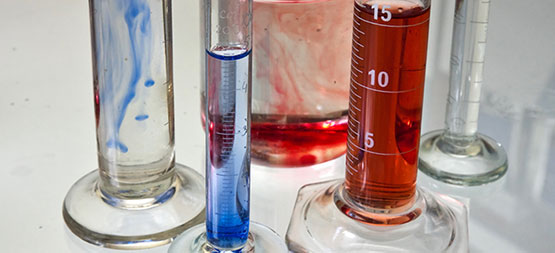Helping Identify Performance-Enhancing Drugs, Through Chemistry

(ISNS) – From steroids to uppers, sports have weathered some pretty big storms when it comes to drugs. Now, a new analytical method may bump up the sensitivity and accuracy of drug testing.
Mass spectrometry, which displays the masses of all the molecules in a sample, has long been a tool to identify mysterious compounds. One of the problems with using it for drug testing has been that tiny negatively-charged molecules that are created when drugs break down in the body don’t show up with the same accuracy as positively-charged ones. Daniel Armstrong, a chemist at the University of Texas at Arlington, created a technique he calls PIESI -- paired ion electrospray ionization. It uses synthesized molecules that are shaped like barbells to gather together the negatively-charged ions and make them heavier, so they show up on the mass spectrometry machine.
The technique was developed a few years ago, for environmental testing and testing biological molecules. “Suddenly we were able to measure things at the parts-per-trillion level,” says Armstrong. One part per trillion is equivalent to one drop of water in 20 Olympic-sized swimming pools, or 3 seconds out of every hundred thousand years. Then he got involved in a project to test whether or not there were performance-enhancing drugs in workout supplements. That got him thinking about new applications for PIESI.
When people take performance-enhancing drugs, the drugs leave a chemical signature known as a metabolite in the urine as the body breaks them down. It turns out the new method is up to 10,000 times better at detecting the metabolites than existing mass spectrometry methods for some drugs (10 times better for others).
One of the benefits of PIESI is that it’s broad enough to apply to a wide variety of drugs, said Armstrong. Along with his student Hongyue Guo, he tested 14 different groups of substances. “We’ve done it for steroids, alcohol, and other drugs,” he said. The team described the approach in a presentation at the 247th National Meeting & Exposition of the American Chemical Society in Dallas this week.
While alcohol may not seem to be a drug of choice for athletes, Armstrong says that booze can be used by competitors looking to depress their system, in order to improve small muscle movements. “Sometimes athletes prefer other things like beta blockers, or sedatives – or at least, a very narrow sliver of them do, for shooting events,” he said.
Beta blockers lower blood pressure, “so your heart beats more slowly, so you don’t move around as much when you’re aiming,” said Armstrong. "If you were a boxer or a skier or a runner, that would help your performance."
Get the world’s most fascinating discoveries delivered straight to your inbox.
There are limitations to the technique -- PIESI wouldn’t be able to detect blood doping.
Megan Grabenauer, a research chemist at RTI International, in North Carolina, says that while PIESI isn’t new, applying it to drug detection is “a big leap forward.”
“Mass spectrometry is tricky,” she said. “A significant amount of a drug in a sample doesn’t always translate to a big outcome in mass [spectrometry], especially for negative metabolites. The technique solves that problem.”
Armstrong pointed out that labs can use all existing equipment to employ the technique, and all they’d need are the special pairing agents, which are manufactured by a chemical company.
Grabenauer agreed. “One of the reasons that I think it will be attractive is that it’s a simple modification to [existing mass spectrometers] in order to implement,” she said. “This is basically a new component to a well-established technique.”
Since PIESI isn’t compound-specific, it increases sensitivity for a wide variety of components. “Even if drugs change, this could work for them,” said Grabenauer.
That’s important because studies show that the threat of detection is itself a powerful deterrent to using banned substances. “As test gets more reliable, people start to think twice before using the drugs,” she said.
Armstrong's team plans to do more research to improve the test’s sensitivity further. “We’re now working to synthesize other pairing agents which could detect drugs in even lower amounts,” he said.
Inside Science News Service is supported by the American Institute of Physics. Katharine Gammon (@kategammon) is a freelance science writer based in Santa Monica, Calif., and writes for a wide range of magazines covering technology, society, and animal science.


